Art, literature, and education come together naturally in this list of new titles, inspiring teachers and students alike! The collection begins with a study of the historical relationship between art and education, and then follows this relationship through to its present-day expression in classroom activities and picture books that link art, texts, and learning. These titles reinforce the importance of the arts in all aspects of education, and encourage creative learning!
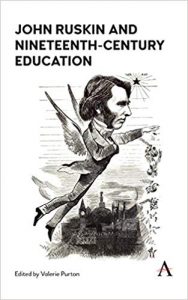 While it might seem niche at first glance, John Ruskin and Nineteenth-Century Education, by Valerie Purton, is an engaging collection of essays that details the lasting influence of the nineteenth century’s foremost art critic on contemporary education. The book is divided into three sections, featuring ten essays by Ruskin scholars from around the world that explore Ruskin’s writings as an artist, a critic, an educator, and a poet, and consider them in relation to his influence on education, libraries and the arts, and theology. As Purton writes in the introduction, Ruskin was at the core of the expansion of artistic and technological education in Victorian Britain, and he inspired creative minds like William Morris, Leo Tolstoy, Marcel Proust, and Mahatma Gandhi. While necessarily Anglocentric, this book is a fascinating deep-dive into an important figure in art history and education, and it provides a great basis of knowledge for art and history educators who are interested in the impact that Ruskin’s ideas still have on their subjects and in their classrooms today.
While it might seem niche at first glance, John Ruskin and Nineteenth-Century Education, by Valerie Purton, is an engaging collection of essays that details the lasting influence of the nineteenth century’s foremost art critic on contemporary education. The book is divided into three sections, featuring ten essays by Ruskin scholars from around the world that explore Ruskin’s writings as an artist, a critic, an educator, and a poet, and consider them in relation to his influence on education, libraries and the arts, and theology. As Purton writes in the introduction, Ruskin was at the core of the expansion of artistic and technological education in Victorian Britain, and he inspired creative minds like William Morris, Leo Tolstoy, Marcel Proust, and Mahatma Gandhi. While necessarily Anglocentric, this book is a fascinating deep-dive into an important figure in art history and education, and it provides a great basis of knowledge for art and history educators who are interested in the impact that Ruskin’s ideas still have on their subjects and in their classrooms today.
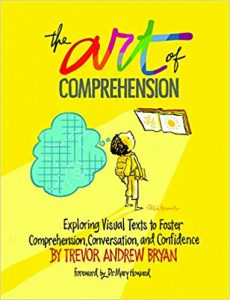 This bringing together of multiple disciplines is continued in The Art of Comprehension: Exploring Visual Texts to Foster Comprehension, Conversation, and Confidence, by Trevor Andrew Bryan. As Bryan writes in the book’s epigraph, “If great books are works of art, then reading is a form of art appreciation and writing is a form of art creation.” In other words, art and literature go hand in hand. True to form, this book is filled with words and images, including illustrative cartoons and reproductions of artistic masterpieces that explore various methods of developing students’ comprehension of texts, images, and the deeper meanings that exist in the relationships between them. The Art of Comprehension highlights this relationship by focusing on specific points of interdisciplinary comprehension, including the understanding of key details, themes, symbols, and moods in a creative work, and, from them, making inferences and connections. This book breaks down a number of “access lenses” that educators can use to help students comprehend artistic and written works, and provides suggestions as to how they can be used to help students engage with creative materials.
This bringing together of multiple disciplines is continued in The Art of Comprehension: Exploring Visual Texts to Foster Comprehension, Conversation, and Confidence, by Trevor Andrew Bryan. As Bryan writes in the book’s epigraph, “If great books are works of art, then reading is a form of art appreciation and writing is a form of art creation.” In other words, art and literature go hand in hand. True to form, this book is filled with words and images, including illustrative cartoons and reproductions of artistic masterpieces that explore various methods of developing students’ comprehension of texts, images, and the deeper meanings that exist in the relationships between them. The Art of Comprehension highlights this relationship by focusing on specific points of interdisciplinary comprehension, including the understanding of key details, themes, symbols, and moods in a creative work, and, from them, making inferences and connections. This book breaks down a number of “access lenses” that educators can use to help students comprehend artistic and written works, and provides suggestions as to how they can be used to help students engage with creative materials.
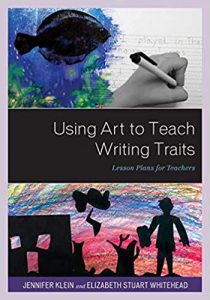 Using Art to Teach Writing Traits: Lesson Plans for Teachers, by Jennifer Klein and Elizabeth Stuart Whitehead, strengthens this connection between artistic and literary creation, this time, however, by encouraging students to do and not only interpret the creative work. This book breaks down seven different writing traits and relevant art lesson plans that are accessible for all elementary teachers — not only art subject specialists. Each chapter focuses on a different writing trait (including the formation of ideas, organization of content, word choice, voice, sentence fluency, use of editorial conventions, and preparation for presenting and publishing) and begins with an explanation of the trait before detailing lesson plans and activities that use art to foster its development. This is Klein’s and Whitehead’s second book about the relationship between art and literacy, and their expertise translates into practical and easy-to-implement classroom activities with included worksheets and lists of helpful resources.
Using Art to Teach Writing Traits: Lesson Plans for Teachers, by Jennifer Klein and Elizabeth Stuart Whitehead, strengthens this connection between artistic and literary creation, this time, however, by encouraging students to do and not only interpret the creative work. This book breaks down seven different writing traits and relevant art lesson plans that are accessible for all elementary teachers — not only art subject specialists. Each chapter focuses on a different writing trait (including the formation of ideas, organization of content, word choice, voice, sentence fluency, use of editorial conventions, and preparation for presenting and publishing) and begins with an explanation of the trait before detailing lesson plans and activities that use art to foster its development. This is Klein’s and Whitehead’s second book about the relationship between art and literacy, and their expertise translates into practical and easy-to-implement classroom activities with included worksheets and lists of helpful resources.
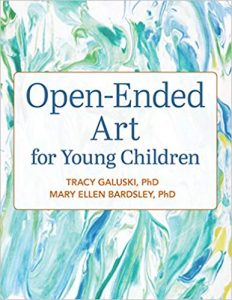 This shift towards creation in the classroom, not just comprehension, is amplified in Open-Ended Art for Young Children, by Tracy Galuski and Mary Ellen Bardsley, which explores art at its most creative in classrooms with young learners. The focus here is on art that allows for uninhibited imaginative expression using a wide variety of materials — without any preconceptions of what the art should look like. As Galuski and Bardsley explain in their introduction, it is not the final outcome of art that should matter, but rather the expressive process. This book supports the creation of an open-ended art centre in the classroom, providing suggestions for its materials and organization, the development of relevant lesson plans, and ideas about how educators can spark students’ inspiration.
This shift towards creation in the classroom, not just comprehension, is amplified in Open-Ended Art for Young Children, by Tracy Galuski and Mary Ellen Bardsley, which explores art at its most creative in classrooms with young learners. The focus here is on art that allows for uninhibited imaginative expression using a wide variety of materials — without any preconceptions of what the art should look like. As Galuski and Bardsley explain in their introduction, it is not the final outcome of art that should matter, but rather the expressive process. This book supports the creation of an open-ended art centre in the classroom, providing suggestions for its materials and organization, the development of relevant lesson plans, and ideas about how educators can spark students’ inspiration.
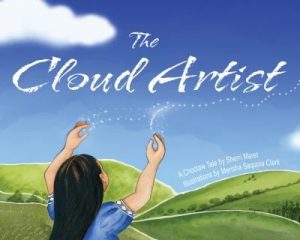 The Cloud Artist / Hoshonti Holbvttoba Inchunli, by Sherri Maret, illustrated by Merisha Sequoia Clark, is a dual-language book written in both English and Choctaw about the nature and purpose of art and creativity. It features a little girl named Leona, who has the ability to paint the clouds into any shapes she likes. The story about her artwork in the sky is accompanied by bright illustrations, and the relationships that exist between the text of the book, its pictures, and its creative narrative theme will inspire young readers in a number of artistic activities. For instance, The Cloud Artist / Hoshonti Holbvttoba Inchunli can be used as a launching point for young children to draw their own cloudscapes in an art class, or, for older grades, it can inspire the writing and design of students’ own picture books, once again bringing art, literature, and education together.
The Cloud Artist / Hoshonti Holbvttoba Inchunli, by Sherri Maret, illustrated by Merisha Sequoia Clark, is a dual-language book written in both English and Choctaw about the nature and purpose of art and creativity. It features a little girl named Leona, who has the ability to paint the clouds into any shapes she likes. The story about her artwork in the sky is accompanied by bright illustrations, and the relationships that exist between the text of the book, its pictures, and its creative narrative theme will inspire young readers in a number of artistic activities. For instance, The Cloud Artist / Hoshonti Holbvttoba Inchunli can be used as a launching point for young children to draw their own cloudscapes in an art class, or, for older grades, it can inspire the writing and design of students’ own picture books, once again bringing art, literature, and education together.
All of these titles and more sources of inspiration can be found on the New Titles shelf near the service desk on the ground floor of the OISE Library.
